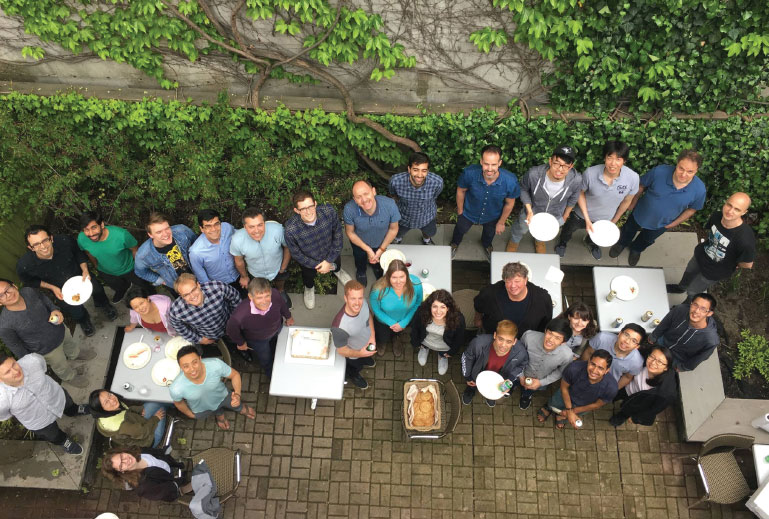
Rocscience is truly global. With a head office in Toronto, the company provides geotechnical software to its more than 7,000 customers around the world. Not bad for a company that was officially formed a little more than 20 years ago as a spin-off from the University of Toronto.
Situated in a beautiful home-like and cozy office in the heart of downtown Toronto, its exterior would never suggest that inside is a team of 33 developers, engineers, marketers and support staff that regularly communicates with more than 120 countries.
Specializing in 2-D and 3-D analysis and design programs for civil engineering and mining applications, Rocscience president Dr. Thamer Yacoub says the company offers different software solutions to design and analyze deep foundations.
“These tools include simple analysis software like RSPile, which helps geotechnical engineers analyze single or group piles using simple methods like the p-y method,” said Yacoub. “On the more advanced side, we offer user-friendly tools to perform complex and detailed analysis using finite element methods in both two and three dimensions: RS2 and RS3, respectively. Both in Canada and around the world, our most popular foundations products are RS2, RS3, RSPile and Settle3D.”
Rocscience’s high-quality programs allow engineers to quickly and accurately analyze surface and underground structures in rock and soil, thereby improving safety and reducing the cost of design projects.
History
The evolution of Rocscience actually dates back three decades to 1987, when the Rock Engineering Group at the University of Toronto first started developing and distributing geomechanics software, which fulfilled a need for more reliable, easy-to-use 2-D and 3-D analysis and design tools in the mining and civil engineering industries.
“Our first suite of programs evolved from work by various graduate students over the years and under the leadership of Dr. Evert Hoek and Dr. John Curran,” said Yacoub. “The development of these initial programs was supported in part by the Canadian mining industry, along with the provincial and federal governments. These early versions were then widely distributed as shareware in Canada and internationally.”
Since 1994, further research and development has transformed these early programs into the commercial versions available today. Currently, 16 high-quality software programs are being sold. Each program includes a detailed orientation manual or online help file, technical support and is competitively priced.
“Our strength comes from the strong geomechanics background of our staff and their excellent programming skills,” said Yacoub. “We have created a common interface for all the programs, resulting in easy-to-use software for the practicing engineer in the field as well as the demanding technical analysts employed by major consulting companies. Rocscience offers expert technical support and can respond quickly to customer concerns. We greatly value the suggestions and comments from our customers – this valuable input helps us update and improve our programs.”
Success secret
When asked what the secret to Rocscience’s success is, Yacoub is quick to say it is their customers first and foremost. “We’re proud to make software that our customers love to use because it’s intuitive and user-friendly,” he said. “Our powerful programs analyze at a faster rate than our competitors’ and allow users to perform complicated geotechnical analyses quickly – reducing costs and saving time. Recommendations from happy customers have really been the key to our success over 20-plus years.”
Yacoub also remains very close to his customers. By attending conferences worldwide, he can get a sense of why they choose Rocscience software over others.
“What stands out most to our clients is that our solutions are as powerful as any on the market – yet affordable for any business size. We offer a wide array of solutions that interact with each other, which helps our customers utilize their software tools more effectively and efficiently. And we listen closely to our customers’ needs and suggestions, regularly incorporating feedback from users into future software updates and upgrades.
As for the future, Yacoub says over the next two to five years, he and his team will continue updating and improve their existing software solutions.
“You can also expect to see us introduce more tools for the geotechnical community to address the needs they’ve identified in their daily work,” he said. “As always, we’ll continue to work closely with our customers around the world to make sure that we’re creating best-in-class solutions to make their work easier and quicker.”